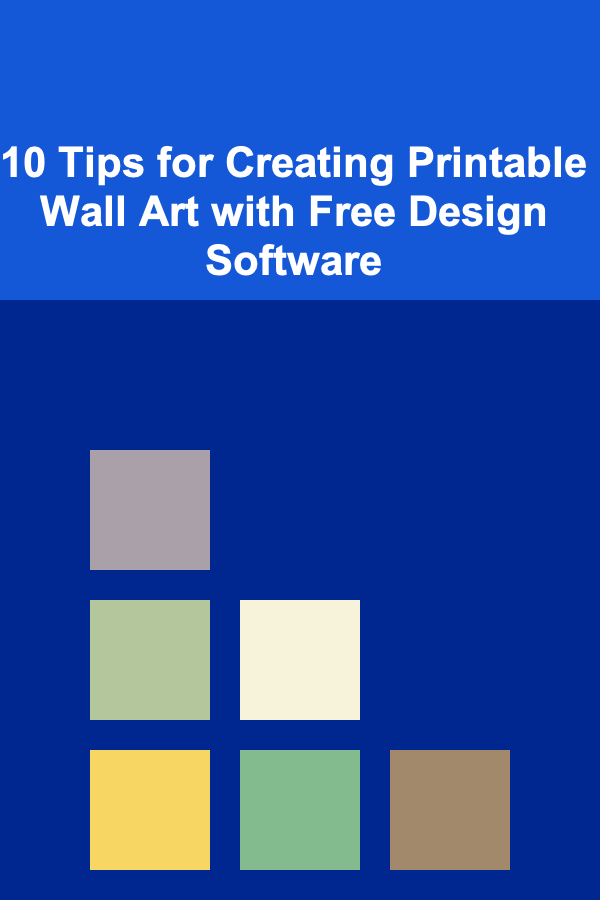
10 Tips for Staying Current with Drafting Technology
ebook include PDF & Audio bundle (Micro Guide)
$12.99$7.99
Limited Time Offer! Order within the next:

In today's fast-paced world, the drafting industry is constantly evolving with new technology, software, and techniques. As the demand for accuracy, efficiency, and innovation grows, staying up-to-date with the latest drafting tools and trends is essential for professionals in architecture, engineering, construction, and design. Whether you're an experienced drafter or just starting out, continuously improving your skills and knowledge can help you remain competitive in the field. In this article, we'll explore 10 valuable tips for staying current with drafting technology.
Embrace Cloud-Based Drafting Software
Cloud technology has revolutionized the way drafts and designs are stored, shared, and edited. Cloud-based drafting software like AutoCAD 360, Revit, or Fusion 360 allows professionals to access their drawings from any location, at any time, on any device. This increased accessibility not only makes it easier for teams to collaborate but also helps streamline the design process and enhance productivity.
Why This Matters:
By using cloud-based software, you can ensure that your work is always up to date, as these platforms typically offer automatic updates. Cloud technology also promotes collaboration, as multiple users can edit and review drawings in real-time, improving workflow and reducing errors.
How to Do It:
- Choose a Cloud-Based Solution: Consider integrating a cloud-based solution like Autodesk BIM 360 or SketchUp for cloud storage and collaboration.
- Synchronize Projects: Ensure your team is using the same cloud platform to streamline collaboration. This can help avoid version control issues and ensure everyone is working on the latest iteration of the project.
Learn 3D Modeling and BIM (Building Information Modeling)
3D modeling and BIM have become essential in modern drafting. Unlike traditional 2D drafting, 3D modeling provides a more comprehensive and interactive view of the design, while BIM allows for more detailed and dynamic designs, facilitating improved communication, planning, and construction management.
Why This Matters:
As more industries move toward adopting BIM, staying proficient with these technologies is crucial. BIM is not just about creating 3D models---it integrates various data aspects of a project, from materials to schedules, helping professionals make better-informed decisions.
How to Do It:
- Enroll in a BIM Course: Take advantage of online courses and certifications to improve your understanding of BIM tools such as Revit, ArchiCAD, or Vectorworks.
- Practice 3D Modeling: Start practicing with 3D modeling software such as SketchUp, Rhino, or Blender to improve your technical drawing and visualization skills.
Stay Updated on Software Updates and New Features
Drafting software companies are constantly releasing new updates and features. Staying informed about these updates can significantly improve your workflow and introduce you to time-saving tools.
Why This Matters:
Software updates often bring new tools that enhance design capabilities, fix bugs, and improve user interfaces. Regularly updating your software ensures that you're using the most efficient tools and avoiding compatibility issues with other programs.
How to Do It:
- Enable Auto-Updates: Turn on automatic updates for your drafting software to ensure that you're always using the latest version.
- Check Release Notes: Regularly read the release notes provided by your software vendor to learn about new features and improvements.
- Join Forums and Communities: Many drafting software vendors have active online communities where users share tips about updates. Participate in these forums to stay ahead of the curve.
Utilize Virtual Reality (VR) and Augmented Reality (AR) Tools
Virtual Reality (VR) and Augmented Reality (AR) are becoming increasingly common in design, especially in architecture and engineering. These technologies allow you to immerse yourself in a 3D model or visualize designs in a real-world environment, providing deeper insight and better decision-making.
Why This Matters:
VR and AR can enhance design presentations, enabling clients or stakeholders to experience a project before it's built. These tools also improve accuracy and help identify potential issues early in the design process.
How to Do It:
- Invest in VR/AR Tools: If your budget allows, invest in VR or AR tools such as HTC Vive or Microsoft HoloLens to view your designs in immersive 3D.
- Explore Software Integration: Look for drafting software that integrates with VR or AR technology, such as Autodesk Revit and SketchUp, which allow users to create 3D models that can be visualized in virtual spaces.
Take Advantage of Automation and AI-Driven Tools
The drafting process is increasingly benefiting from automation, especially with the integration of artificial intelligence (AI) and machine learning. Many software solutions now include features that automate repetitive tasks, such as dimensioning, layer management, or creating standard details, saving valuable time and reducing errors.
Why This Matters:
AI-driven tools can handle routine tasks, freeing up time for more creative and critical aspects of drafting. Automation also improves consistency and accuracy by minimizing human error.
How to Do It:
- Explore AI-Powered Tools: Look for software with built-in automation features like AutoCAD's automation tools, which assist with tasks such as object placement and layer management.
- Adopt AI-Integrated Platforms: Utilize platforms like BIM 360 or Revit that are beginning to integrate AI features, allowing for smarter design choices based on historical data and predictive analysis.
Participate in Online Communities and Forums
Drafting professionals can benefit greatly from connecting with others in the industry. Online communities and forums provide valuable insights, tips, and tricks for using drafting software, solving design challenges, and staying updated on the latest technology trends.
Why This Matters:
By engaging with your peers, you can learn about innovative techniques and gain access to resources that can improve your skills. Online communities also provide an opportunity to ask questions, solve problems, and collaborate with others.
How to Do It:
- Join Online Forums: Participate in forums like the Autodesk Community, Revit Forum, or SketchUp Community to exchange ideas and stay informed about the latest developments.
- Attend Webinars and Virtual Events: Many software providers host webinars and virtual conferences that offer insights into new features and best practices. Attend these events to stay current.
Take Continuing Education and Certifications
The drafting industry is constantly evolving, and taking advantage of continuing education programs and certifications can help you stay ahead. Many drafting software providers offer certification programs that provide a deep dive into their products, helping you master the software and showcase your expertise.
Why This Matters:
Obtaining certifications not only strengthens your technical knowledge but also adds credibility to your resume. Certifications can demonstrate your commitment to staying current and provide you with a competitive edge in the job market.
How to Do It:
- Pursue Vendor Certifications: Software providers like Autodesk and Bentley offer certification programs for their products, such as AutoCAD, Revit, and MicroStation.
- Enroll in Online Courses: Websites like Coursera, Udemy, and LinkedIn Learning offer a wide range of courses on drafting technology and software, from beginner to advanced levels.
Experiment with New Tools and Software
While mastering industry-standard drafting software is crucial, it's also beneficial to experiment with new tools and software. Many emerging tools offer unique features and innovations that could enhance your workflow and design capabilities.
Why This Matters:
Exploring new tools allows you to discover innovative features that could improve your productivity. It also helps you stay agile in a fast-moving industry and ensures you're prepared for future changes in the drafting field.
How to Do It:
- Test New Software: When new software is released, take the time to explore its features and functionalities. Programs like Rhino, Blender, or even Figma are becoming more relevant for digital design and drafting.
- Stay Open-Minded: Don't be afraid to explore niche tools or software that could provide new capabilities or solve specific problems that traditional drafting tools don't address.
Follow Industry Trends and Attend Trade Shows
Staying informed about the latest industry trends can help you anticipate changes and be proactive in adopting new technologies. Trade shows, conferences, and expos offer an excellent opportunity to see the latest products and technologies in action.
Why This Matters:
Attending trade shows and conferences allows you to network with industry experts, learn about emerging trends, and gain hands-on experience with new tools and software.
How to Do It:
- Attend Conferences: Participate in conferences like Autodesk University, the International Conference on Computer-Aided Design, or the AIA Conference on Architecture to stay informed about the latest trends in drafting and design technology.
- Subscribe to Industry Publications : Follow blogs, journals, and magazines that focus on drafting technology and design innovations. Publications like Cadalyst and Design World provide up-to-date news, reviews, and articles.
Maintain a Continuous Learning Mindset
The drafting industry is not static; it's constantly evolving. To stay current with drafting technology, it's essential to cultivate a mindset of continuous learning. Whether it's through formal education, self-study, or professional development, committing to learning ensures that you're always on the cutting edge of technology.
Why This Matters:
A mindset of continuous learning allows you to adapt quickly to new tools and techniques, helping you stay competitive in the field. It also fosters innovation and creativity, as you're always looking for ways to improve your skills and knowledge.
How to Do It:
- Set Learning Goals: Regularly set aside time for learning new skills, whether through formal courses, online tutorials, or self-study.
- Stay Curious: Keep an open mind and explore new tools, techniques, and trends that could improve your drafting practice.
Conclusion
In today's fast-paced and ever-evolving drafting world, staying current with the latest technology is essential for success. By embracing cloud-based tools, learning 3D modeling and BIM, staying updated on software advancements, and exploring emerging technologies like VR, AR, AI, and automation, you can improve your drafting skills and remain competitive in the industry. Consistently seeking new knowledge and engaging with the drafting community will ensure that you stay at the forefront of innovation in your field.
Reading More From Our Other Websites
- [Digital Decluttering Tip 101] From Inbox Overload to Zero-Inbox: A Step-by-Step Guide to Email Clean-Up
- [Home Pet Care 101] How to Properly Dispose of Pet Waste in an Environmentally Friendly Way
- [Organization Tip 101] How to Use Labels to Enhance Organization in Your Hobby Room
- [Organization Tip 101] How to Use a Pegboard for Versatile Kitchen Organization
- [Personal Finance Management 101] How to Invest Wisely for Long-Term Financial Growth
- [Organization Tip 101] How to Organize a Clothing Donation Drive
- [Personal Finance Management 101] How to Leverage the Best Budget App on iPad for Travel Budgeting
- [Personal Care Tips 101] How to Use Hair Oil for Oily Hair Without Weighing It Down
- [Organization Tip 101] How to Create a Checklist for Workplace Emergency Kits
- [Biking 101] How to Achieve the Perfect Bike Fit for Maximum Comfort

How to A/B Test Geotargeted Ads for Your Dropshipping Store
Read More
How to Create a Checklist for Building Your Brand Voice and Style
Read More
How to Troubleshoot Common Baking Problems
Read More
How To Stay Motivated While Learning a Language
Read More
How to Sear Pork Chops Perfectly
Read More
10 Tips for Creating Printable Wall Art with Free Design Software
Read MoreOther Products

How to A/B Test Geotargeted Ads for Your Dropshipping Store
Read More
How to Create a Checklist for Building Your Brand Voice and Style
Read More
How to Troubleshoot Common Baking Problems
Read More
How To Stay Motivated While Learning a Language
Read More
How to Sear Pork Chops Perfectly
Read More